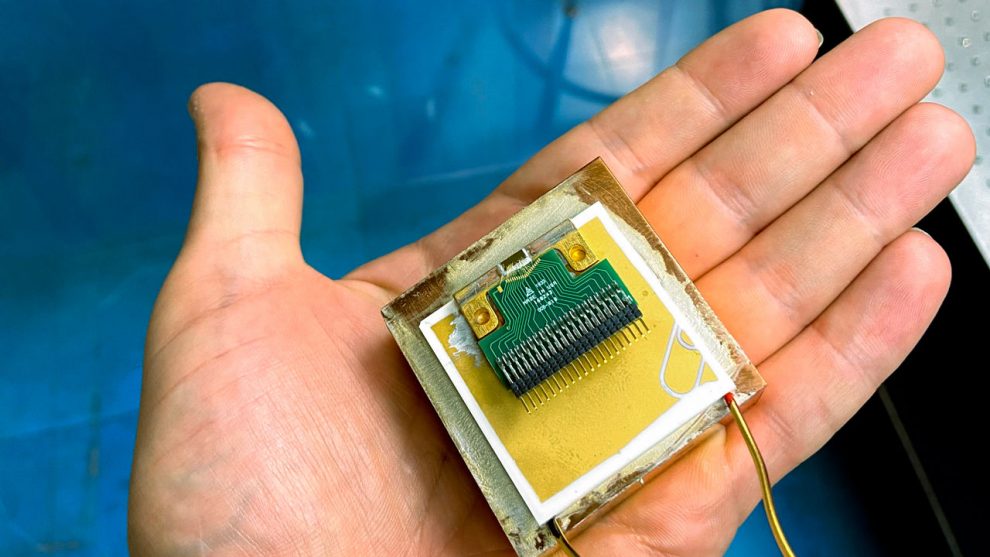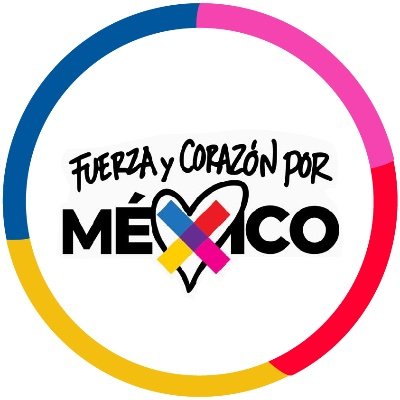A terahertz laser sits on top of a small square cooler. The laser could enable new portable medical diagnostics and explosive detectors.
New lasers that fire terahertz beams could propel medical imaging and contraband detection
Compact, chip-based lasers have conquered much of the electromagnetic spectrum, from ultraviolet to infrared, enabling technologies from digital communications and barcode readers to laser pointers and printers. But one key region of the spectrum remained untamed: the terahertz band, which lies between infrared light and microwaves. Engineers hankered for a ready source of terahertz radiation, which can penetrate opaque objects and probe chemical fingerprints inside. But compact terahertz lasers have only worked at ultralow temperatures, limiting them mostly to laboratory settings.
No longer. In today’s issue of Nature Photonics, researchers report creating a grain-of-rice–size terahertz laser on a chip that operates at 250 K, or –23°C, within reach of a plug-in cooler the size of a hockey puck.
“This is a great achievement,” says Miriam Vitiello, a condensed matter physicist at the Nanoscience Institute of Italy’s National Research Council. “It has been a long-term goal in the community to push up the temperature of terahertz lasers,” she adds. “There is now a plethora of applications that can be done,” from medical imaging to explosives detection at airports.
Standard chip-based lasers generate their photons when electrons fall into electron vacancies within a semiconductor alloy, whose makeup determines the color. Gallium nitride, for example, emits blue light, whereas gallium arsenide emits red. However, no semiconductor alloys emit photons in the terahertz range. (“Terahertz” refers to the light’s frequency: trillions of cycles per second.) In 1994, researchers at AT&T Bell Labs created a new kind of laser in which the semiconductor’s structure, not just its chemistry, determined the wavelength. Called a quantum cascade laser (QCL), it contained hundreds of layers of semiconductors of precise thicknesses. Electrons injected into the structure cascade down hundreds of energy steps, shedding a photon at each one. Those photons were infrared in the first QCL, but in 2002 researchers in Italy and the United Kingdom created QCL lasers that emitted terahertz photons.
Those devices needed to be chilled to 50 K, but last year, researchers led by physicist Jérôme Faist at ETH Zurich unveiled a terahertz QCL made up of hundreds of alternating layers of gallium arsenide and aluminum gallium arsenide (AlGaAs) that works at 210 K. It still required bulky and expensive cryogenic coolers, however.
At higher temperature the electrons leap the barriers between layers rather than cascading through the structure one step at a time. “Over-the-barrier electron leakage was the killer,” says Qing Hu, a physicist at the Massachusetts Institute of Technology. So Hu and his colleagues added more aluminum to the AlGaAs barriers in hopes of better confining the electrons. Hu’s team also had to prevent electrons from interacting in a way that caused them to leak through the AlGaAs barriers.
Now, Hu’s team has shown that by tailoring its layered structure even more precisely—some layers were just seven atoms thick—it could make electrons behave at temperatures warm enough to be reached with standard compact thermoelectric coolers. What’s more, Hu says, the same strategy should enable the team to eventually make room temperature terahertz lasers.
Room temperature terahertz sources could be paired with terahertz detectors that also work at room temperature, which Vitiello and other researchers are now developing. That marriage could lead to technologies such as terahertz imagers able to distinguish skin cancer from normal tissue without a biopsy or watch airline passengers and cargo for hidden explosives, illegal drugs, and even pharmaceutical fakes. Faist says: “We have hoped for this for a very long time.”
This content was originally published here.
EL 2 DE JUNIO DEL 2024 VOTA PARA MANTENER
TU LIBERTAD, LA DEMOCRACIA Y EL RESPETO A LA CONSTITUCIÓN.
VOTA POR XÓCHITL













Comentarios